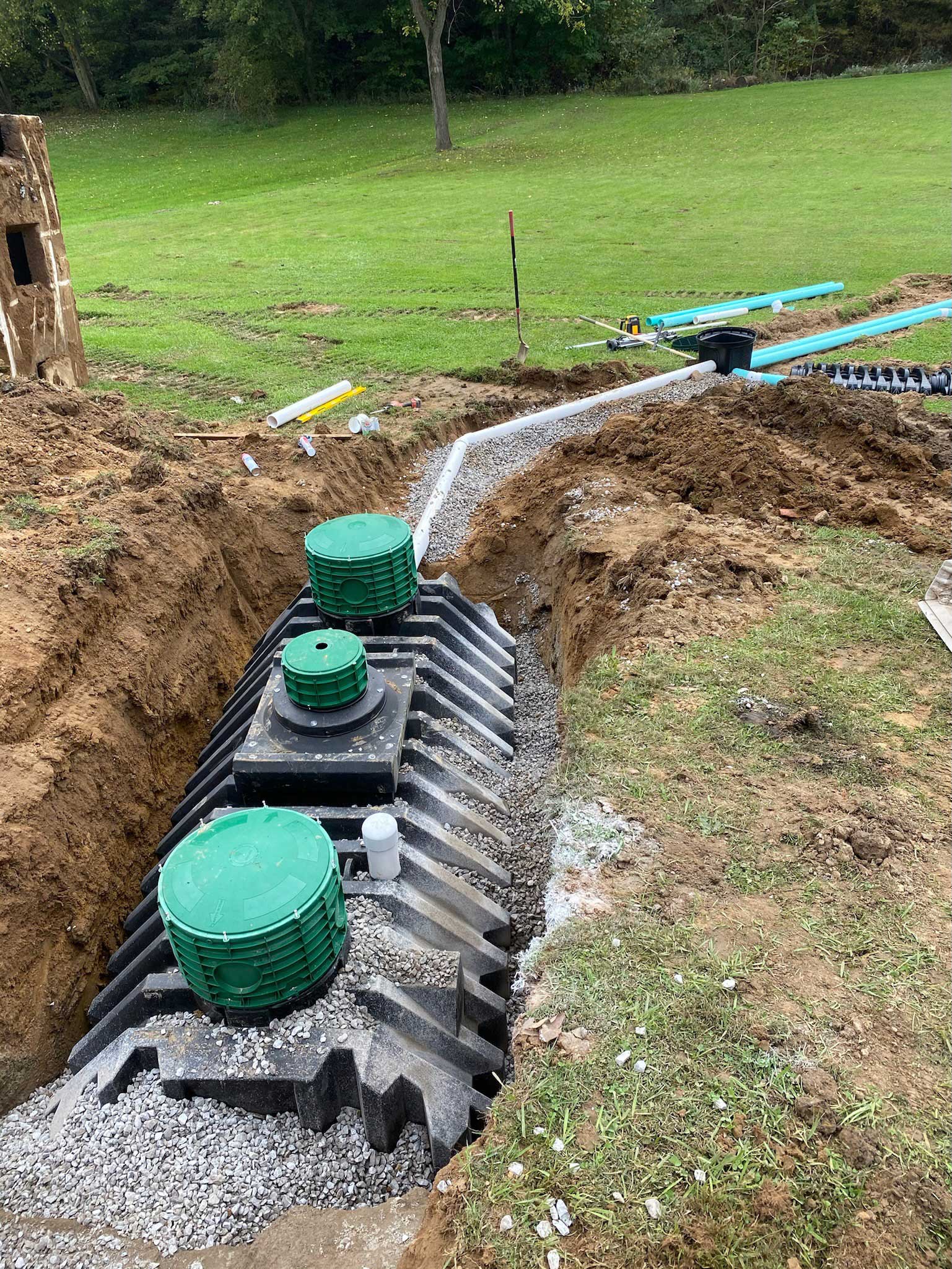Specialist Septic Ohio - Relied On Septic Tank Professionals in Ohio
Revealing the Art of Excavation: Pro Tips for Safe and Efficient Digging
In the realm of excavation, the mastery of secure and productive excavating is an art kind that needs precision, understanding, and adherence to recognized practices. As soil is turned and planet is relocated, the details of excavation reveal themselves, demanding an eager understanding of devices, soil composition, safety procedures, and environmental factors to consider. The know-how needed to navigate these components efficiently can mean the difference in between a successful excavation task and a prospective calamity. By unwinding the layers of this complex procedure, a world of understandings and strategies waits for those seeking to elevate their excavation skills to brand-new heights.
Significance of Correct Equipment
To guarantee the safety and efficiency of any type of excavation project, utilizing the suitable devices is extremely important. Excavation projects differ in range and complexity, ranging from tiny domestic landscape design jobs to large building and construction tasks.
Excavators are basic items of machinery in any type of digging operation. These flexible devices can be found in numerous dimensions to fit different project demands. Tiny excavators are excellent for smaller sized jobs, while larger excavators deal with extra comprehensive projects efficiently. Backhoes are another important equipment kind, combining the features of a loader and an excavator in one device. They are beneficial for jobs requiring adaptability and ability to move.
Excavators excel in tasks that require pushing huge quantities of dirt or debris. By investing in the suitable devices, excavation tasks can be completed securely, on time, and with precision.
Understanding Dirt Composition
A comprehensive understanding of dirt composition is essential for executing excavation projects with accuracy and safety and security. Comprehending the different types of soil is vital as it straight influences excavation approaches, tools choice, and general task performance.
Silt particles are smaller than sand yet bigger than clay, providing moderate drain and cohesion. Organic matter, such as decomposing plant product, impacts soil fertility and security.
Before beginning excavation, performing soil tests to establish its structure and qualities is necessary. This details assists in picking the proper equipment, executing precaution, and establishing excavation techniques customized to the certain soil problems - dump truck companies in ohio. By recognizing soil structure, excavation professionals can boost project results while making sure safety and adherence to ideal practices
Precaution and Methods
Comprehending soil structure is the cornerstone upon which precaution and protocols for excavation projects are built, guaranteeing the health of workers and the success of the venture. When it concerns safety and security throughout excavation, there are a number of key measures that must be carried out to minimize risks and stop crashes.
Primarily, prior to any kind of digging commences, an extensive evaluation of the site need to be conducted to identify any type of possible dangers such as below ground utilities, unsteady soil conditions, or neighboring structures that could posture a threat. It is crucial to have a skilled person look after the excavation procedure to ensure that all safety protocols are followed strictly.
Moreover, all workers involved in the excavation must be properly educated in safe digging practices and the appropriate operation of equipment. By adhering to these safety and security measures and protocols, excavation projects can be completed successfully and without case.
Efficient Excavation Planning
When starting an excavation task, careful planning is important to why not look here make sure effectiveness, safety, and effective outcomes. Reliable excavation preparation involves numerous vital steps that are vital for the smooth execution of the task. The initial step is to carry out an extensive site analysis to determine any possible dangers, such as wikipedia reference underground utilities or unsteady dirt problems. This info is vital for creating an in-depth excavation strategy that includes safety actions and run the risk of mitigation methods.
When the site analysis is complete, the next action is to create a clear timeline and routine for the excavation tasks. This includes figuring out the series of jobs, equipment needs, and workforce allocation. Appropriate organizing helps prevent hold-ups and ensures that the project remains on track.

In addition, interaction amongst all employee is vital throughout the preparation stage. Clear instructions, normal updates, and reliable sychronisation are crucial for an effective excavation task. By spending time and initiative in thorough preparation, excavation groups can considerably enhance efficiency, reduce dangers, and accomplish successful results.

Taking Care Of Ecological Considerations
With increasing focus on environmental sustainability in construction techniques, handling environmental factors to consider has become a crucial facet of excavation jobs. Excavation tasks have the potential to impact the surrounding environment through soil erosion, sediment have a peek at this site drainage, habitat disruption, and contamination of water resources. To reduce these dangers, it is important to implement best methods that focus on environmental management.

Furthermore, correct waste management is essential to stop soil and water contamination. Executing procedures for the disposal of dangerous materials, recycling of waste materials, and lessening making use of unsafe chemicals can substantially decrease the ecological impact of excavation tasks. By incorporating these methods right into excavation preparation and implementation, building companies can make certain that their jobs are not just safe and effective however additionally ecologically responsible.
Final Thought
In conclusion, mastering the art of excavation requires a thorough understanding of correct tools, dirt composition, safety actions, and efficient preparation. By complying with these guidelines and taking into consideration environmental aspects, excavations can be performed safely and successfully. It is essential to prioritize safety and security and efficiency in every digging task to guarantee effective outcomes.
As soil is transformed and earth is moved, the intricacies of excavation reveal themselves, requiring a keen understanding of devices, dirt structure, safety and security protocols, and ecological factors to consider.To make certain the safety and performance of any excavation task, utilizing the ideal equipment is critical.A thorough grasp of dirt composition is fundamental for implementing excavation projects with accuracy and safety and security. Comprehending the various types of soil is important as it straight impacts excavation techniques, equipment selection, and total job efficiency. By recognizing soil make-up, excavation specialists can boost task end results while ensuring safety and adherence to best practices.